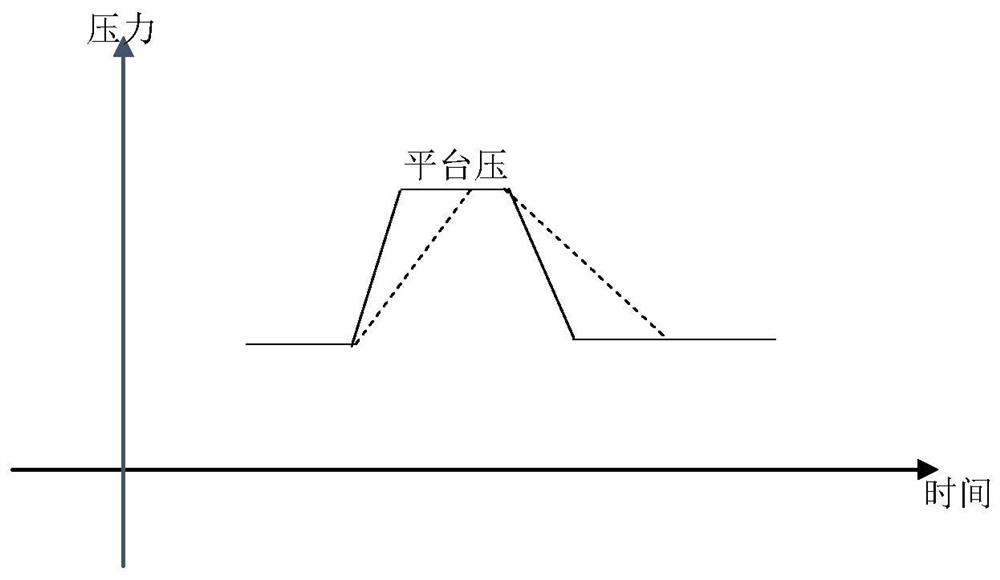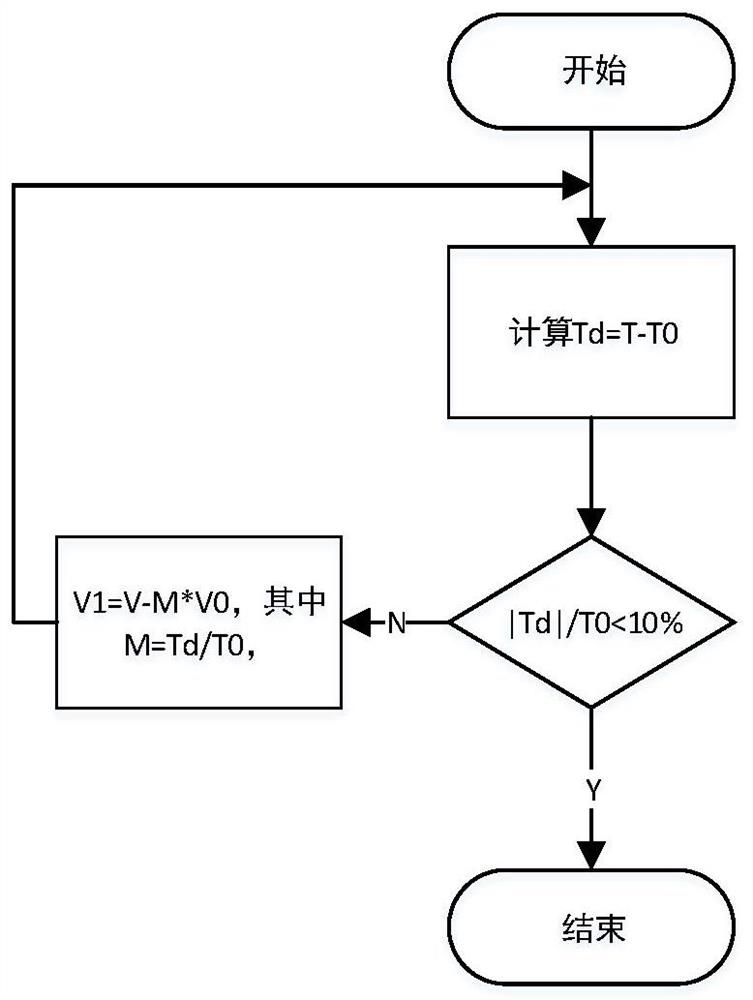Method for adaptively adjusting buck-boost speed, application thereof and respiratory support equipment
A technology for self-adaptive adjustment and equipment support. Applied in the field of medical devices, it can solve problems such as reduced platform pressure, reduced user experience, and unfavorable patient rehabilitation, achieving the effect of long maintenance time and good user experience.
- Summary
- Abstract
- Description
- Claims
- Application Information
AI Technical Summary
Problems solved by technology
Method used
Image
Examples
Embodiment 1
[0035] refer to figure 2 , the present invention provides a method for adaptively adjusting the buck-boost speed, the steps comprising:
[0036] S1: Under the condition that the air resistance of the user is R0 and the compliance is C0, the measured initial step-down speed is V0. At this time, the step-down time of the respiratory support equipment is T0;
[0037] S2: The ventilator is in the treatment state. When the step-up and step-down speed is V, the processor obtains the actual step-up and step-down time T of the user. At this time, the time-consuming deviation of step-up and step-down is Td=T-T0;
[0038] S3: Set the pressure deviation threshold X%, and the processor judges whether |Td| / T0
[0039] S31: If yes, end the adjustment and maintain the current buck-boost speed V;
[0040] S32: If not, in the user's next breathing cycle, the buck-boost speed is performed at the speed of V1=V-M*V0, where M=Td / T0, and the time for the buck-boost is T1;
[0041] S321: Retur...
Embodiment 2
[0047] Respiratory support equipment mainly provides fresh air to patients with respiratory disorders, in which lung compliance and lung air resistance are two important parameters. Lung compliance and lung resistance (ie, air resistance) can not only characterize the condition of the patient's lungs, but also can be used to establish a mathematical model of the breathing circuit, which plays a decisive role in the accuracy and precision of pressure-controlled ventilation and its extended ventilation mode . At present, it is difficult to directly calculate the compliance of the lung and the resistance of the pipeline. In general, the flow rate and pressure of the breathing circuit are used to estimate. In the process of estimation, the pressure value obtained by the exhalation end pressure sensor is generally used as the airway pressure, and the difference between the flow values obtained by the inhalation end flow sensor and the exhalation end flow sensor is the flow rate v...
Embodiment 3
[0052] The present invention also provides a respiratory support device adopting the above-mentioned method for adaptively adjusting the buck-boost speed, including a host, a processor installed inside the host, and a memory. Time deviation, decompression speed and user's personal information, the processor is used to obtain and calculate the decompression time and the time difference between decompression and decompression, and also includes a pressure sensor and a timer, and the pressure sensor is used to detect The pressure value, the timer is used to record the buck-boost time, and the timer, pressure sensor and memory are all electrically connected to the processor.
[0053] As a preferred embodiment, the user's personal information includes personal social information and respiratory mechanics parameters, specifically, the respiratory mechanics parameters are air resistance R and compliance C.
[0054] The respiratory support device provided by the present invention, bec...
PUM
 Login to View More
Login to View More Abstract
Description
Claims
Application Information
 Login to View More
Login to View More - R&D
- Intellectual Property
- Life Sciences
- Materials
- Tech Scout
- Unparalleled Data Quality
- Higher Quality Content
- 60% Fewer Hallucinations
Browse by: Latest US Patents, China's latest patents, Technical Efficacy Thesaurus, Application Domain, Technology Topic, Popular Technical Reports.
© 2025 PatSnap. All rights reserved.Legal|Privacy policy|Modern Slavery Act Transparency Statement|Sitemap|About US| Contact US: help@patsnap.com


